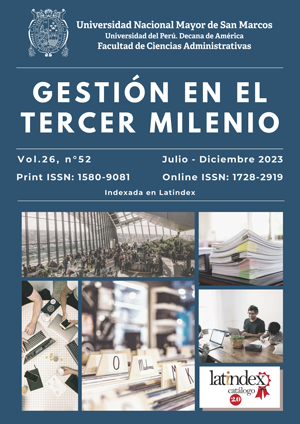Relevance of financial literacy on poverty reduction in Peru
DOI:
https://doi.org/10.15381/gtm.v26i52.26040Keywords:
Financial literacy, poverty, social welfare programsAbstract
In Peru, according to the definition of the National Institute of Statistics and Data Processing (INEI, 2023), an individual in considered to be living in poverty if their monthly income is below PEN 415. Poverty decreased considerably from 2011 to 2019. However, after the COVID-19 pandemic, it has significantly increased, to the detriment of all progress made in the previous decade. Even though social welfare programs are a good option to fight poverty, it is necessary for these programs to complement their strategy with financial literacy to improve their effectiveness. This paper evaluates the current situation and the importance of financial literacy for the reduction of poverty in Peru. This research is descriptive, non-experimental and cross-sectional. The results of several studies conducted in various countries revealed that financial literacy is significantly effective to reduce poverty. It can be concluded that, in Peru, it is necessary to conduct more finance training programs in the Ayacucho, Cajamarca, Huánuco and Pasco regions, where the incidence of poverty is above 40%. It is also advisable to evaluate the effectiveness of financial literacy training through O'Connell's five-tier approach (2009).
Downloads
Published
Issue
Section
License
Copyright (c) 2023 Roxana Helena Tramontana Tocto

This work is licensed under a Creative Commons Attribution 4.0 International License.
THE AUTHORS RETAIN THEIR RIGHTS:
(a) The authors retain their trademark and patent rights, and also over any process or procedure described in the article.
(b) The authors retain the right to share, copy, distribute, execute and publicly communicate the article published in Gestión en el Tercer Milenio journal (for example, place it in an institutional repository or publish it in a book), with acknowledgment of its initial publication in the Gestión en el Tercer Milenio.
(c) Authors retain the right to make a subsequent publication of their work, to use the article or any part of it (for example: a compilation of their work, lecture notes, thesis, or for a book), provided that they indicate the source. of publication (authors of the work, magazine, volume, number and date).













